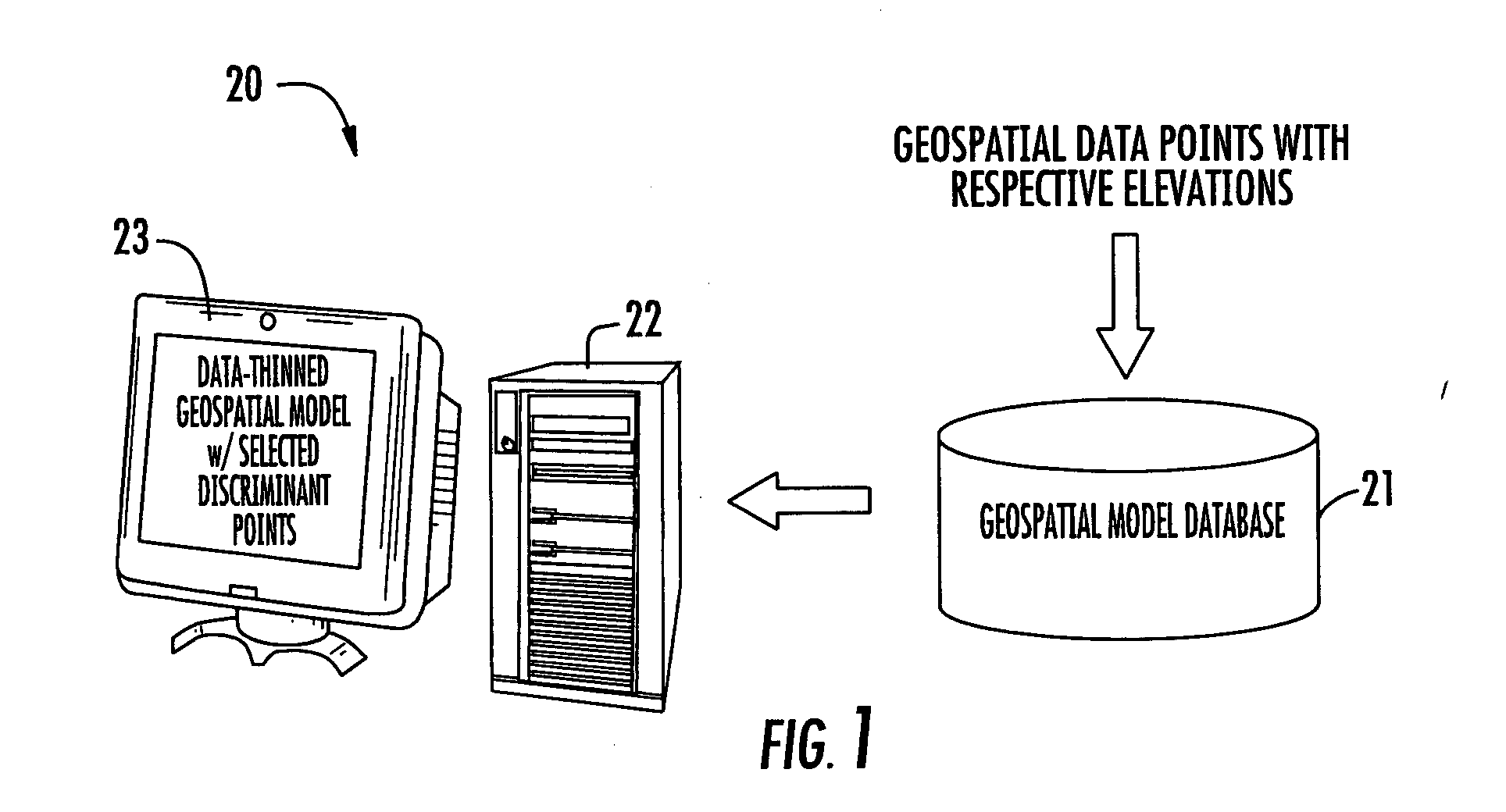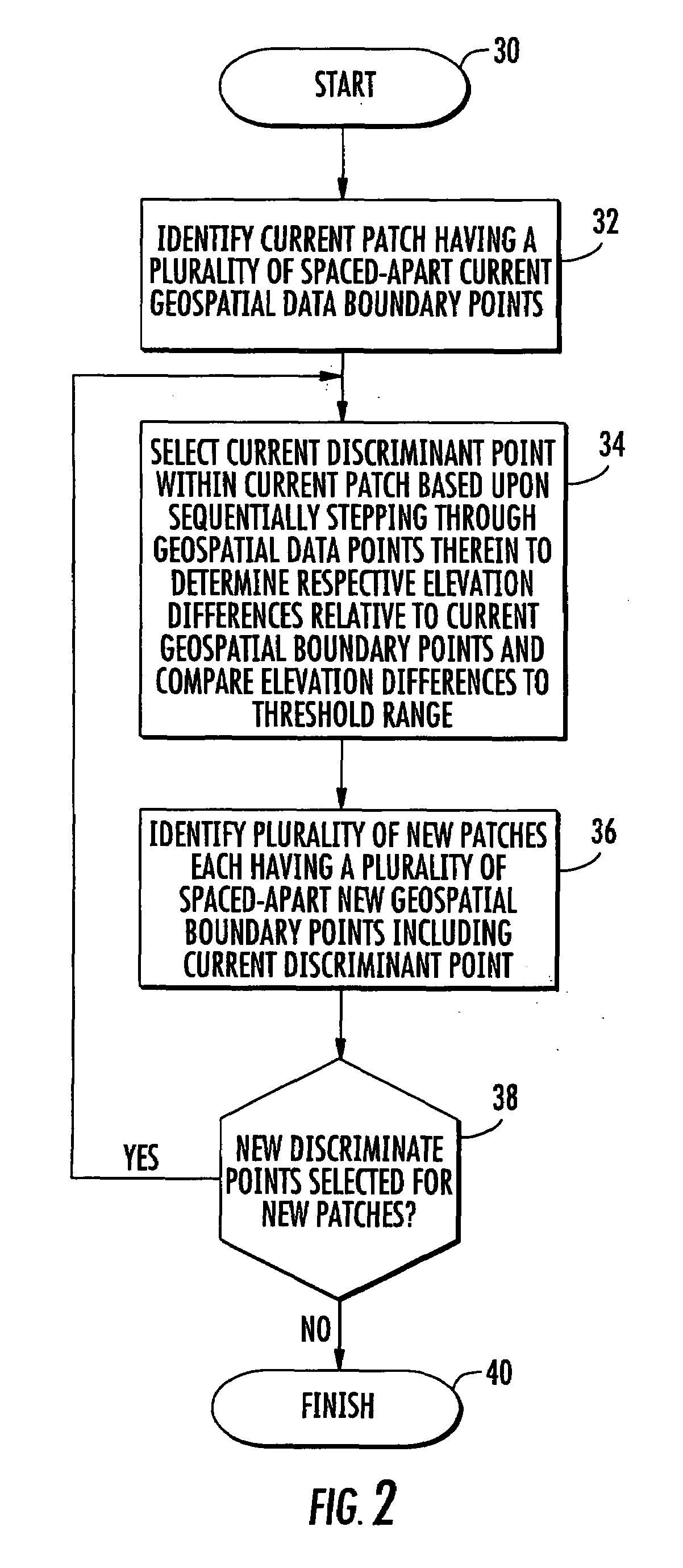Geospatial modeling system providing data thinning of geospatial data points and related methods
a geospatial and data thinning technology, applied in the field of topographical modeling, can solve the problems of requiring labor and time intensive manual editing, affecting the accuracy of geospatial data, so as to reduce the size of data and the related methods.
- Summary
- Abstract
- Description
- Claims
- Application Information
AI Technical Summary
Benefits of technology
Problems solved by technology
Method used
Image
Examples
Embodiment Construction
[0021]The present invention will now be described more fully hereinafter with reference to the accompanying drawings, in which preferred embodiments of the invention are shown. This invention may, however, be embodied in many different forms and should not be construed as limited to the embodiments set forth herein. Rather, these embodiments are provided so that this disclosure will be thorough and complete, and will fully convey the scope of the invention to those skilled in the art. Like numbers refer to like elements throughout, and prime notation is used to indicate similar elements in alternative embodiments.
[0022]Referring initially to FIG. 1, a geospatial modeling system 20 illustratively includes a geospatial database 21 for storing geospatial data points each having respective elevations associated therewith. By way of example, the geospatial data points may be captured using various techniques, such as stereo optical imagery, Light Detecting And Ranging (LIDAR), Interferom...
PUM
 Login to View More
Login to View More Abstract
Description
Claims
Application Information
 Login to View More
Login to View More - R&D
- Intellectual Property
- Life Sciences
- Materials
- Tech Scout
- Unparalleled Data Quality
- Higher Quality Content
- 60% Fewer Hallucinations
Browse by: Latest US Patents, China's latest patents, Technical Efficacy Thesaurus, Application Domain, Technology Topic, Popular Technical Reports.
© 2025 PatSnap. All rights reserved.Legal|Privacy policy|Modern Slavery Act Transparency Statement|Sitemap|About US| Contact US: help@patsnap.com



